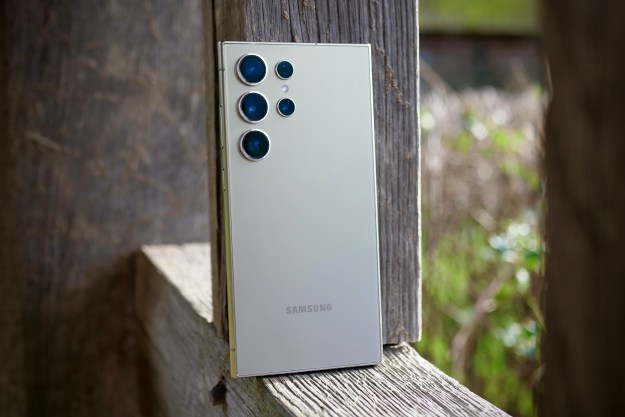
The National Association of Broadcasters (NAB) has been asking mobile manufacturers to change this for years, NPR reported in 2015, and while tides do seem to be finally changing, there’s still a long way to go. It’s a serious issue: Apart from the simple fact that it’s nice to listen to music for free without using up data, FM radio can save lives, the advocacy group told Digital Trends.
“It makes sense from a public safety aspect alone.”
“From a public safety aspect alone, it makes sense to enable radio on smartphones. Broadcast radio plays an important role as ‘first informers’ in local communities, providing up-to-the-minute information when disaster strikes,” said Dennis Wharton, an executive vice president with the NAB. “By equipping mobile devices with radio capability, wireless carriers allow Americans to tap into that valuable public resource.”
So why aren’t there any laws about enabling the radio? Digital Trends reached out to the Federal Communications Commission, which promptly pointed us to a speech chairman Ajit Pai gave in February at a North American Broadcasters Association event. At the event, Pai largely agreed with the NAB’s position, noting how important the radio could be in emergencies. “You could make a case for activating chips on public safety grounds alone.”
“Most consumers would love to access some of their favorite content over-the-air, while using one-sixth of the battery life and less data,” continued Pai. Unfortunately, that’s exactly where the problem lies — less data. Carriers make more money from customers who use more data. After all, if you’re paying by the GB it’s pretty easy to use up a good portion of your data through music-streaming services.
The carrier
You could argue that carriers should pressure manufacturers to enable the FM radios in their phones. You could, but carriers wouldn’t.

“The long and short of it is that this is totally controlled by device manufacturers, through both hardware and software. If our customers want to use FM radio on their phone and the device manufacturer has enabled it, we say rock out,” T-Mobile wrote in an emailed statement to Digital Trends.
This is a pretty big change from five years ago. It’s only in recent years that carriers have backed away from their stance against FM radios, likely related to the rise of unlimited data. After all, in the past, the more data customers used the more they paid the carrier. Now, if a customer has unlimited data, it doesn’t really matter whether they stream music or use the radio.
At least some carriers will still care about you not using the FM radio.
That’s assuming the carrier doesn’t have a stake in a streaming service, however. At the beginning of this year, news broke that Sprint had taken a whopping 33 percent stake in Tidal, a music streaming service founded by Jay-Z that’s aimed at providing subscribers with high-resolution music. More recently, news leaked that Verizon was mulling investing in Pandora. The deal ultimately fell through, yet some argue it’s only a matter of time before Big Red makes a similar investment in another platform.
The fact is that even after the era of limited data is over, at least some carriers will still care about you not using the FM radio. While some may be more concerned about it now than others, it’s likely that will change — especially since carriers clearly aim to offer their own content. (and that goes beyond just music: You’ve heard of Verizon’s streaming TV plans, right?)
But the carriers ultimately only have sway — it’s the manufacturers that really make the decision to enabled that FM radio chip.
The manufacturer
Manufacturers have made some moves to include FM radio of late. LG recently sealed a deal with NextRadio that will see radio enabled on the majority of its phones.
But it’s important to note the difference between having FM radios disabled and simply not having an app. The Next Radio website actually has a good list of FM radio-capable phones, which shows that most Samsung phones, many HTC phones, Motorola phones, and more have a radio ready to go — if you download the NextRadio app.

But that leaves one pretty strong holdout — Apple. And Apple’s not going to change its mind anytime soon. Recently, the company was urged to enable the FM radio on the iPhone after a horrific hurricane and fire season. Turns out, the newest iPhones don’t even have an FM radio chip. The iPhone 7 and iPhone 8 are both chip-free when it comes to the FM radio, and we assume future models will continue that trend.
Again, things boil down to why Apple may not want consumers to use the radio, and again, a possible culprit is music streaming. Apple Music has become popular, and the company may not want to jeopardize subscriptions with free radio.
The tides seem to be changing. More manufacturers are adopting FM radio, and some carriers even encourage it. But there are holdouts — Apple being the biggest. And with the chip missing from the iPhone altogether, that’s unlikely to change in the near future. In other words, if you want an FM radio, you may need to make the switch to Android. As far as disasters are concerned, it certainly can’t hurt to have a battery-powered radio in your arsenal.
Editors' Recommendations
- You’ll soon be able to control your iPhone and iPad with your eyes
- I can’t wait for Nothing to launch this stunning phone
- Why you should buy the iPhone 15 Pro Max instead of the iPhone 15 Pro
- The DOJ has sued Apple over the iPhone. Here’s what it means for you
- 8 iPhone browser apps you should use instead of Safari


